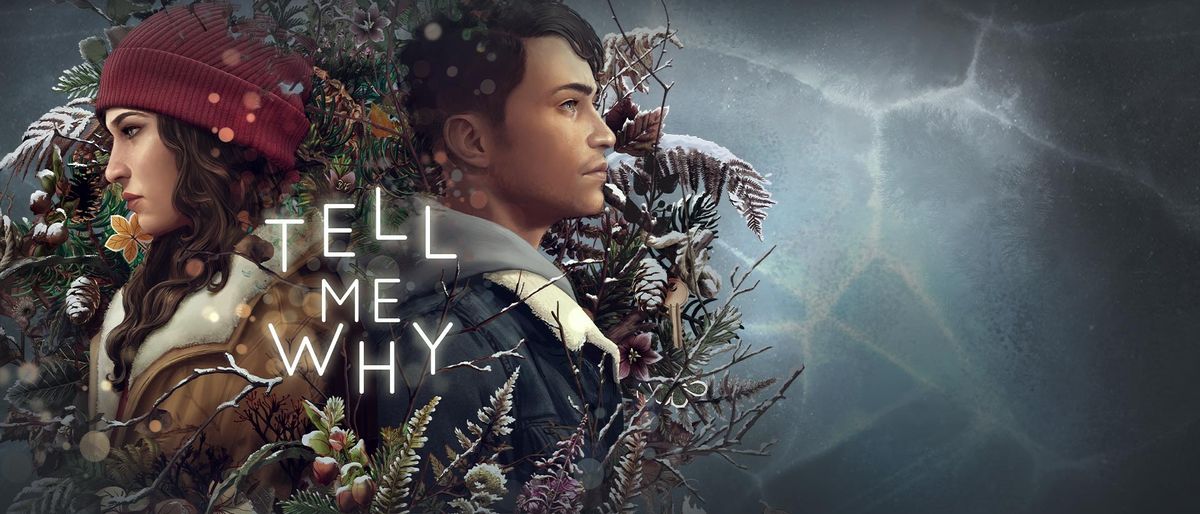Laptop Mag Verdict
Tell Me Why is a snoozefest, but it deserves praise for its trailblazing effort to tell a much-needed story about an underrepresented group in video games.
Pros
- +
Graphically impressive
- +
Playable transgender character, a rarity in video games
Cons
- -
No manual save option
- -
Unbearably slow pacing
- -
Low replayability
- -
Unskippable cutscenes
- -
Boring gameplay
- -
Disappointing ending
Why you can trust Laptop Mag
Yawn! Tell Me Why is the most boring game on Xbox Game Pass — yeah, I said it!
Admittedly, not everything about Tell Me Why is a total snoozefest. For example, the premise of Tell Me Why is far from boring. I’ll even go one step further and say it’s riveting and enthralling, offering an immersive, step-into-my-shoes dive into the challenges of gender identity à la Lev from The Last of Us — a rarity in the video-game realm.
- Xbox Game Pass is a steal — so why aren't people using it?
- Best Xbox Game Pass PC games in 2020
The Xbox and PC exclusive follows the tale of traumatized twins who revisit their childhood home where a spine-chilling tragedy occurred — one of them murdered their mother, Mary-Ann.
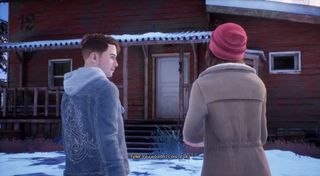
However, the twins’ conflation-filled memories about why Mary-Ann found herself in such a precarious situation are hazy and murky. As such, it’s your job to unravel the mysteries behind the twins’ mother’s death. One harrowing theory suggests Mary-Ann was so upset about one of her young twins' gender identity issues, she tried to kill her own child. The twins claim she was killed in self-defense.

“Whoa! Tell Me Why sounds pretty fascinating so far,” you may be thinking. “How could this game possibly be boring?” Well, as aforementioned, the story itself is thrilling, but my personal gripe with Tell Me Why is how the developers at Don’t Nod Entertainment decided to design the gameplay to explore this wild plot. Microsoft calls Tell Me Why an “adventure game,” but where, pray tell, is the adventure? Tell Me Why is, at best, a graphically impressive visual novel filled with bland puzzles, yawn-worthy cutscenes and boring mechanics — all culminating into one gigantic let-down of a finale.
How Tell Me Why lures you into its boring lair
Tell Me Why starts off with an explosive bang, taking us 10 years into the past where you’re shown a distressed, shaken up youngster sitting in the police chief’s office. “I went to show her my haircut,” the snivelly child said. “She had a gun. She freaked out.”
When Police Chief Eddy Brown said that everything will be alright, the child shouted, “No, it’s not OK! My mom tried to kill me, so I stabbed her. I killed my mother.”
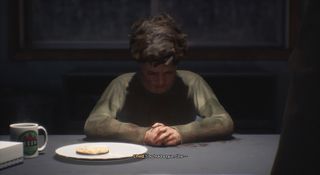
After that gripping scene, who wouldn’t want to stick around? There are so many questions swirling around your mind, including what would compel a mother to kill her own child? Once you’re pulled back into the present, you discover that the young child who confessed to the murder is Tyler Ronan who is now a transgender male. Tyler is the first playable transgender protagonist created by a major studio, a big win for transgender representation in video games.
Tell Me Why takes place in a beautiful, fictional Alaskan fishing village called Delos Crossing, which has a breathtaking wintry landscape with log cabin-esque buildings, picture-perfect snow-capped mountains and hints of Native American Tlingit cultural influence. With a compelling story and gorgeous graphics, Tell Me Why seduced me into its boring lair.

We get our first glimpse of Delos Crossing’s natural beauty when Alyson, Tyler’s twin sister, picks up Tyler from Fireweed, a juvenile detention center he’s been living in for the past decade. In order to return home, the twins must take a ferry across the river. While the twins exchange awkward pleasantries after not seeing each other for years, you get to look around and take in the Alaskan landscape — and boy is it beautiful! Tell Me Why may be boring, but Delos Crossing surely isn’t.
During this ferry ride, you’re introduced to Tell Me Why’s incredibly tedious gameplay — every now and then, you’ll be prompted to choose how you’d like to respond to characters, which can affect the story down the line. At first, the choose-your-own-adventure vibes are intriguing, but the visual-novel game mechanics — requiring nothing more than a simple press of the Y or X button — gets old fairly quickly.
Tell Me Why’s incredibly boring gameplay
Tell Me Why gives you the illusion of choice. While being prompted to reply to a character, you’re given pre-selected answers that, at times, are the same exact responses worded in different ways. For example, in one scene, we meet Alyson’s friend (and Tyler’s love interest) Michael. Alyson mutters to Michael that she can’t wait to move out of Delos Crossing to Juneau (the Land of Milk and Honey in Tell Me Why) with him, impelling Tyler to ask, “What did you say?” Although Alyson made plans to move to Juneau with Tyler, her twin brother had no idea there’d be a third party.
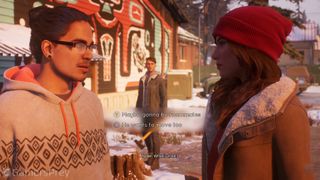
Playing as Alyson, you’re prompted to reply with two responses: “Maybe we’re going to be roommates” or “He wants to move in with us, too.” I don’t know about you, but those two responses seem awfully similar to me, hence the illusion of choice. You can tell these dialogue options don’t affect the game’s trajectory in any way, but they were implemented to heighten the game’s interactiveness. In some cases, you’re allowed to go ask a character all the pre-selected queries listed, so the excitement of, “Oh, no! I’ve got to make sure I ask the right question!” is lost.
To be fair, there are some pivotal choice-based interactions that do seem to affect the trajectory of Tell Me Why.

During Alyson’s ferry ride with Tyler, she gives her twin brother a gift from Delos Crossing Police Chief Eddy Brown, the man who arrested Tyler, sent him to Fireweed, adopted Alyson, and forbade her from seeing Tyler for seven years. Of course, Tyler doesn’t take kindly to the gift (a priceless ring), but it’s up to you to decide whether you’d like to accept it. One option lets you begrudgingly accept the gift and another propels Tyler to throw the ring into the river (I chose the latter ‘cause screw him!). This decision greatly affected Chief Brown’s attitude toward Tyler later on in the game.
Besides replying to people all day long, another prominent aspect of Tell Me Why’s gameplay is finding lost objects. I don’t find much enjoyment in trying to find lost objects in real life, so I don’t see its appeal in video games. The twins never seem to know where their damn personal belongings are, whether it’s their car keys, ID or pay stubs. Again, the game’s saving grace is its beauty — even indoor locations have a quaint, charming ambience.

For the first lost item or two, you’re excited to explore the alluring environment. However, it eventually becomes exhausting. The game is split into three chapters, focusing on three main locations: the twins’ childhood home, the police station and the grocery store where Michael works. By the third chapter, you’re at the twins’ childhood home for the umpteenth time being asked to — once again — search for another slew of items these irresponsible twins have misplaced. Yawn!
Let’s not forget the bland, easy-to-solve puzzles. Mary-Ann had a talent for writing fairy tales, so she wrote “The Book of Goblins” that she lovingly read to her twins every night.
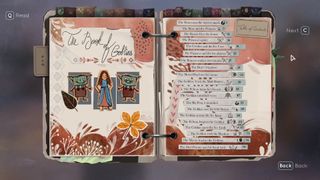
“The Book of Goblins” isn’t just a set of innocuous tales for kids, though — it’s filled with metaphors and analogies that have parallels with Mary-Ann’s life. “The Book of Goblins” is often used as a key to unlock puzzles throughout the game. Now, don’t get me wrong, I love reading a good ol’ book, but in a video game? In the words of the meme-worthy Kimberly "Sweet Brown" Wilkins, “Ain’t nobody got time for that!” “The Book of Goblins” has 20 stories inside of it with at least 80 pages of fairytale poppycock. To simply unlock a damn door, I had to read “The Princess’s Party,” which had its answer key deeply embedded inside the tale. At one point, I had to fix a broken fuse box in a garage — a puzzle that added nothing to the progression of Tell Me Why. These puzzles bored me to tears, but I was so determined to solve the mysteries surrounding Mary-Ann’s murder that I was hell-bent on completing the game.
There are supernatural elements in Tell Me Why — and it’s still boring
The Ronan twins can speak to each other telepathically, which was particularly useful when the twins devised a plan to sneak into the police station to get more information on what happened during that fateful night. However, the supernatural ability isn’t a playable element in Tell Me Why. You can’t summon your twin telepathic powers to advance in the game. Instead, the supernatural ability often appears in scenes when the twins want to communicate something they don’t want nearby characters to hear.
The twins can also “see” into the past whenever they stumble upon a location that triggers their memories — this supernatural ability is playable. When you arrive at a memory-triggering area, your controller will vibrate, impelling you to revisit the past with your twin.
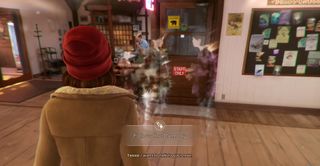
These “memory visions” play out in front of you like hazy movies with specks of light. For the most part, the twins’ memories match, but other times, you’re forced to decide which twins’ memory you believe the most. Most of these bland visions don’t answer your pressing questions, but they offer insight into Mary-Ann’s personality, which doesn’t align with the mom-was-a-mentally-ill-bigot picture the twins painted of her.
For the past decade, the twins maintained that their mother attempted to kill Tyler due to his inner battle with gender identity, but as you observe Mary-Ann's sweet character during these memory visions, you start to notice that the twins’ narrative of what happened is full of bullcrap. In fact, you’ll learn that the twin’s mother was actually supportive of Tyler’s transition, which was confirmed by Mary-Ann’s friend Tessa and her husband Tom. One fascinating peek into the past tells us that it was not Tyler who stabbed his mother — it was Alyson. However, Tyler took the fall and went to Fireweed in Alyson’s place.
At the tail end of the first chapter of the Tell Me Why trilogy, you’ll meet the Mad Hunter for the first time in a hair-raising, bone-chilling moment. It’s a dark, hooded figure who doesn’t seem human — he has a creepy, crescent-shaped smile with a wood-textured face. There’s zero explanation about who — or what — this thing is, so you’re compelled to stick around and find out. Could the Mad Hunter be some sort of demonic character who possessed Mary-Ann to try to murder her own child?

Unfortunately, you’ll later find out that the Mad Hunter isn’t even real; he’s just a figment of the twins’ imagination. In fact, the Mad Hunter doesn’t even have any bearing on Mary-Ann’s death. Again, boring!
Rare fun moments in Tell Me Why
Tell Me Why is a total drag, but I’d be lying if I said there weren’t moments that have jolted me awake because they stepped away from the typical choose-your-response, find-this-object, read-this-book-to-solve-this-puzzle gameplay.
The most fun moment in Tell Me Why doesn’t occur until its third chapter and it involves Michael and Tyler’s flirtatious interactions. In one scene, Tyler helps Michael out at the grocery store as he does inventory before clocking out. Tyler and Michael take a break from the chore and head to the stockroom where they throw plush toys at each other.
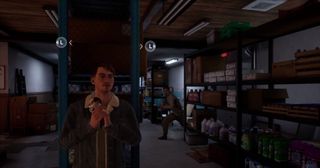
As Tyler, you get to hide behind a shelf, and just as Michael jumps out his hiding place to attack, you can deck him right in the face with a plush toy. This is what I came here for! This is fun! I wish there were more action-filled moments in the game like this one.
There was a moment where the twins discovered Mary-Ann’s hidden loft, beautifully decorated with characters from “The Book of Goblins.” This time, I felt that using “The Book of Goblins” to uncover the secrets of the loft would be worth it. I didn’t need to peruse through boring fairytales to unlock a door. This time, I had to compare a Mad Hunter mural on the wall (seen below) to a similar picture found in “The Book of Goblins.” Then, I had to pick out the areas of the mural that were changed to unlock the puzzle. In another puzzle, I pieced together Mary-Ann’s pivotal life moments in the right order by looking at the dates of old letters, photos and other mementos.
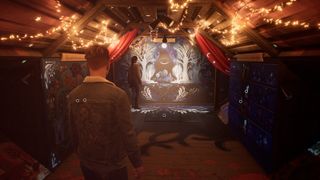
The puzzles themselves were fun, but what added to their enjoyment was the suspense of knowing you’re about to find out some wild secret buried inside this loft. After all, why else would Mary-Ann lock away this area from prying eyes? Could this provide some answers to why Mary-Ann was holding a gun that night?
When you finally unlock all the puzzles in the loft, you find out that Mary-Ann lost a child named Leo Ronan prior to the twins. Of course, this is a tragic, heartbreaking situation, but it doesn’t answer any of our pressing questions. This seems to be a bad habit the Tell Me Why developers can’t shake — they’re great at building suspense, but when you finally uncover the truth, it wasn’t worth the anxious anticipation and investment.
Tell Me Why’s boring finale
When you finally make it to the end of Tell Me Why after enduring hours and hours of painfully boring gameplay and long, unskippable cutscenes, you think, “This is it! After three chapters of torturous boredom, I’ll finally know what really happened the night Mary-Ann died!”

And then, Tell Me Why betrays you. In a moment that crushed my tortured soul, Tyler says, “We’re never going to know the truth are we? You have to decide what you believe. Whatever you choose, you’ve got to live with it.” At this point, I threw my hands up and said, “Are you kidding me?!”
Instead of unveiling the true, unadulterated events that occured during that fateful night, you’re asked to choose which twins’ account of the murder you believe the most. Tyler still maintains that Mary-Ann tried to kill him due to his haircut, which makes no sense because all evidence points to the mother having zero motive to hurt her beloved twins. Alyson, on the other hand, believes Mary-Ann was on the verge of killing herself, and while she was loading up the gun, she spotted Tyler running down the dock and chased him to figure out why he was running. In both memories, young Alyson stabs Mary-Ann to save Tyler from his mother. I begrudgingly chose Alyson’s perspective on Mary-Ann’s death without having any closure of what really happened that night.
Tell Me Why I played this game again?
Tell Me Why PC performance
Tell Me Why ran smoothly for the most part, however, in one extremely frustrating moment, I found myself stuck inside a kitchen counter. Yes, you read correctly. I got stuck inside a kitchen counter — this might have been the most exciting thing that’s happened in this entire ho-hum game.
I’m playing “Tell Me Why” and Tyler Ronan got stuck inside the kitchen counter, and I don’t know how to get him out! How ‘bout “tell me why” this is happening? 🤦🏽♀️ @TellMeWhyGame #TellMeWhy #XboxGamePassUltimate #gaming pic.twitter.com/5W9gMpvKHLSeptember 11, 2020
How did it happen? After I chose to “believe” Alyson’s account of her mother’s murder, I stepped into the shoes of Tyler who revisits his now-sold childhood home one last time to gather some possessions. After reading a letter on the kitchen counter, Tyler got stuck inside the kitchen counter. No matter how many times I tried to make him walk out of the counter, his legs and arms moved, but he went absolutely nowhere.
At that point, I couldn’t finish the game and I refused to restart it because Tell Me Why only supports autosaves — there is no way to manually save the game. If I launched the game from the last autosave point, I’d have to sit through the painful “We’re never going to know the truth” scene again, and I’d rather saw my own foot off. Fortunately, Tyler chose to imprison himself inside a kitchen counter during one of the last scenes of the game, so I didn’t miss much. I tweeted @TellMeWhyGame about kitchen-counter-gate and asked, “Tell Me Why this is happening?” They did not reply.
Bottom line
Tell Me Why, from a positive standpoint, unlocked the incredible potential that lies in the video-game realm to widen the minds of insular gamers. Think about the time you stepped inside the shoes of a protagonist who really captured your heart. They could be so far removed from who you are, but because the game was written so carefully and diligently, you can truly empathize with the protagonist’s emotional journey.

This is what Don’t Nod Entertainment did well. With the introduction of Tyler, the writers took their time to create Tyler Ronan, a transgender male in a small-town Alaskan fishing village. Sometimes, when writers create characters from underrepresented groups, they feel the need to make them victims of extreme violence and injustice. But when you step inside Tyler shoes, you’re simply living his everyday, mundane life, and as such, you start to pick up on some pesky anti-transgender microaggressions from the small-town folk — something you’d never experience if you’re not a transgender person. As a result, I’m certain Tell Me Why has instilled more empathy among gamers toward the transgender community. I hope Tyler opens the door to more underrepresented stories from an everyday perspective.
Still, Tell Me Why’s applaudable transgender representation doesn’t change the fact that this game is boring AF. A “Choices Matter” game like Tell Me Why should have a high replayability factor because most gamers would love to experiment with how different choices could affect the direction of the game, but who the hell would sit through a second go of unskippable cutscenes, a crappy save feature, turtle-like pacing and painfully boring puzzles? You couldn’t pay me to sit through Tell Me Why again. Tell Me Why is a snoozefest — don’t @ me.
Kimberly Gedeon, holding a Master's degree in International Journalism, launched her career as a journalist for MadameNoire's business beat in 2013. She loved translating stuffy stories about the economy, personal finance and investing into digestible, easy-to-understand, entertaining stories for young women of color. During her time on the business beat, she discovered her passion for tech as she dove into articles about tech entrepreneurship, the Consumer Electronics Show (CES) and the latest tablets. After eight years of freelancing, dabbling in a myriad of beats, she's finally found a home at Laptop Mag that accepts her as the crypto-addicted, virtual reality-loving, investing-focused, tech-fascinated nerd she is. Woot!
